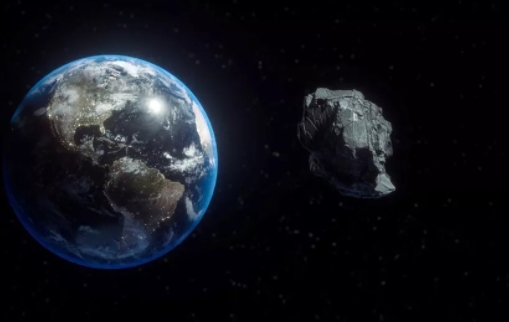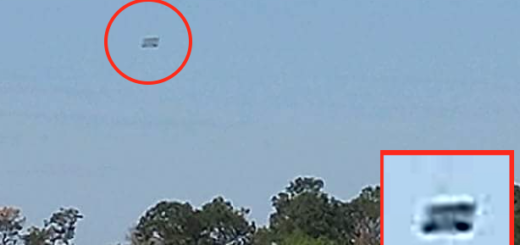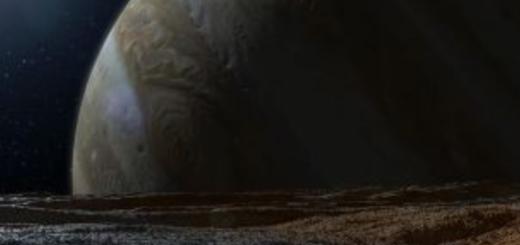Move asteroids now before they become a threat, researchers argue

There’s no doubt that asteroids pose a potential threat to life on Earth. Just ask the dinosaurs: When a mile-wide rock slammed into the Yucatán Peninsula 65 million years ago, they had a pretty rough time of it. While it’s been quite a while since the last major impact, a new one could come at any point, and we had better be prepared.
To help prevent such a calamity, a pair of astronomers is proposing two new strategies. One, we should limit the number of asteroid missions to minimize human-caused orbital changes. Two, we should actively manage the positions of asteroids to place them into orbits that will be safe over the long term.
The new dinosaurs
Space rocks hit Earth all the time. Thankfully, the vast majority are just meteoroids, bits of space junk no bigger than your hand. When they strike the atmosphere, the small ones (about the size of grains of sand) make brief-but-beautiful falling “stars.” The bigger ones can dazzle as they flame across the sky.
About once every five years, rocks over 20 feet (6 meters) wide come screaming into Earth’s atmosphere, detonating with as much energy as the nuclear bomb dropped on Hiroshima, Japan. Thankfully, most of those events happen over open ocean (since 70% of Earth’s surface is open ocean), so nobody really notices.
Asteroids big enough to wipe out entire cities drop every hundred years or so, and the dinosaur killers are extremely rare, happening every 15 million years, 10 times more than previously thought, according to a new study.
But these events do happen, and potential impactors are notoriously hard to spot. The challenge is that asteroids tend to be small and not shiny, making them incredibly dim and difficult to observe with our telescopes. And even when we do see them, predicting their orbits is even harder. That’s because for small, lumpy objects like asteroids, all sorts of things can affect their trajectory — spin rates, uneven heating and cooling, random collisions with other objects and even the gravity of distant planets all conspire to randomize their orbits.
So, besides waiting and watching, what can we do to prevent catastrophic impacts?
The key master
The current stop-asteroids-from-killing-us-all strategy is to continuously monitor the skies for threatening asteroids, ones that might potentially intersect Earth’s orbit. The thinking goes that, if we were to spot a major asteroid with Earth in its crosshairs, we could launch some sort of mission to attempt to deflect it.
So far, there are no known Earth killers, but that could change on any given day, either because we see an asteroid that we haven’t caught before or some natural process shifts an asteroid from a safe orbit into a dangerous one.
But it’s not just random natural processes that can dangerously alter asteroids, as a pair of researchers at the Outer Space Institute at the University of British Columbia pointed out in a recent conference paper submitted to the seventh International Academy of Astronautics Planetary Defense Conference and published to the preprint database arXiv.
It turns out that innocent missions to asteroids can have grave consequences. The problem has to do with gravitational “keyholes,” or relatively tiny regions in space where a planet can gravitationally influence an asteroid in such a way that it sets the asteroid on an eventual planet-crossing trajectory. Keyholes are especially dangerous because it’s incredibly difficult to predict if and when a particular asteroid might enter a keyhole; all it takes is a tiny nudge to make the transition from “just another rock” to “danger to humanity.”
Click here for more Space.com videos…
As an example, the researchers examined asteroid 99942 Apophis, which will have a close approach to Earth in 2029. It turns out that this asteroid has a surprisingly large number of keyholes near its current orbit. Currently, Apophis is not predicted to enter into any of the keyholes, and it should stay safely away from us. But if a future mission to the asteroid were to go awry — like crashing instead of landing — it might shift Apophis into a keyhole, and we would have to do something about it.
Apophis is just one example, but as space agencies plan future asteroid-studying missions and interest in space mining continues to ramp up, we have to be careful. So here’s the advice for asteroid missions: Select the asteroids carefully — not just for ease of access but also for reducing potential harm should the mission not go according to plan.
Stop the spread
The concept of keyholes opens up another interesting discussion, the researchers pointed out. Let’s say one day, we see another asteroid that is on a trajectory that brings it a little too close to Earth for comfort. If we were to alter its trajectory, it would fly by at a much greater distance. But the maneuver might push the asteroid dangerously close to a keyhole, which would increase the risk of a future collision with Earth.
On the other hand, some asteroids are nowhere near an Earth-crossing orbit but are naturally close to one, or even dozens, of keyholes, so they pose a greater risk of becoming threats in the future.
So, what’s the best approach? There’s no easy answer. Some asteroids should be left alone to skate near Earth, because the risk of a collision now is less than the risk of entering a keyhole should we move it, the researchers said. But others should be actively managed, even if they pose no active risk at this moment.
In the end, the researchers found, finding safe harbors for asteroids — orbits that don’t intersect with Earth and aren’t near any keyholes — will have to be made individually. Missions to asteroids,including missions intended to deflect asteroids away from Earth, will have to take keyholes into account.



 Creators of mankind
Creators of mankind Description of “Tall white aliens”
Description of “Tall white aliens” Where they came from?
Where they came from? About hostile civilizations
About hostile civilizations The war for the Earth
The war for the Earth “Tall white aliens” about eternal life
“Tall white aliens” about eternal life Video: “Nordic aliens”
Video: “Nordic aliens” Aliens
Aliens Alien encounters
Alien encounters The aliens base
The aliens base UFO
UFO Technology UFO
Technology UFO Underground civilization
Underground civilization Ancient alien artifacts
Ancient alien artifacts Military and UFO
Military and UFO Mysteries and hypotheses
Mysteries and hypotheses Scientific facts
Scientific facts


















